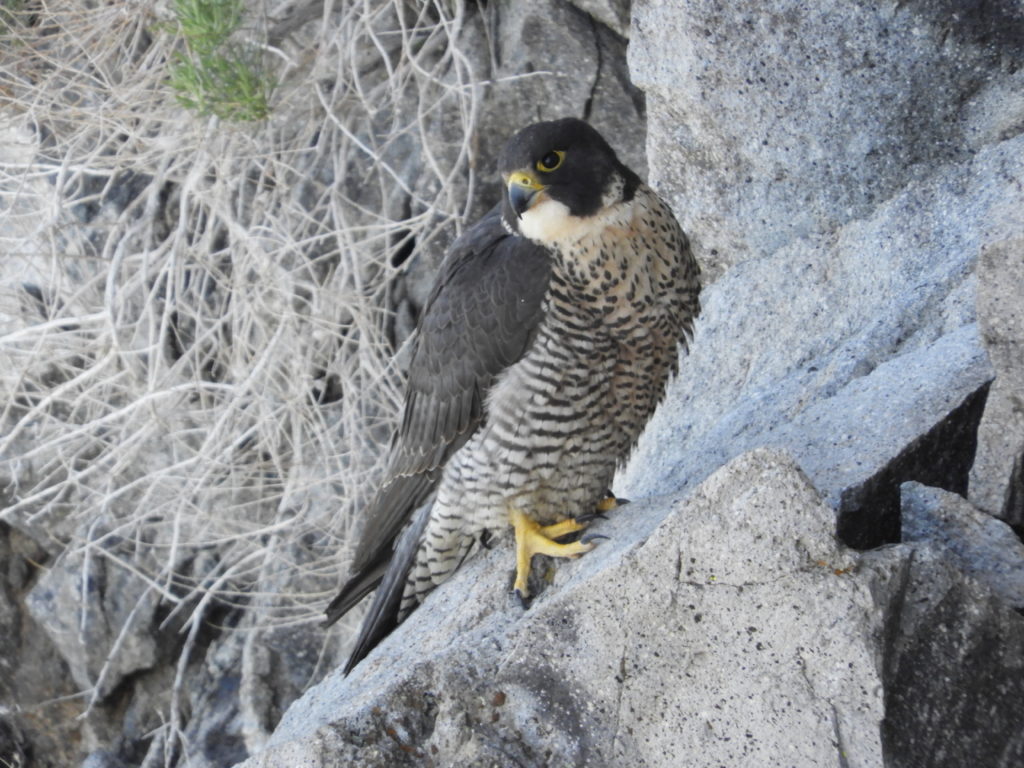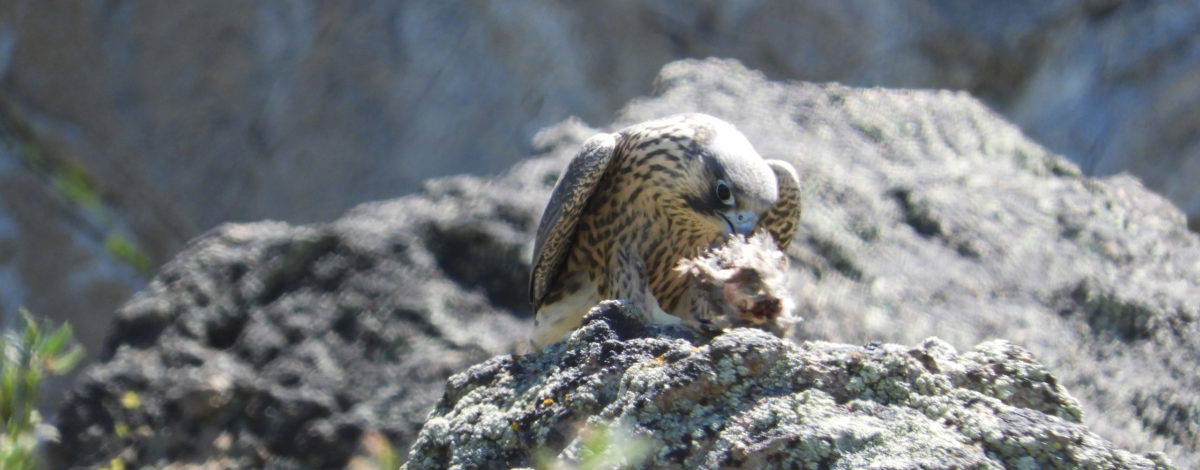Peregrine Falcons Thriving at Tahoe
Thanks to a collaboration of education and conservation efforts, the peregrine falcon is making a comeback at Lake Tahoe. For the second year in a row, young peregrine falcons successfully left their nest at Castle Rock on the East Shore.
“The goal of this collaborative is to learn more about how the pair of falcons respond to different types of human presence so we can better tailor our management,” said Stephanie Coppeto, wildlife biologist at the USDA Forest Service Lake Tahoe Basin Management Unit, in a press release. “This approach allows us to take the proper actions to protect the future of these birds while keeping the area open. We want to keep it open but encourage people to be mindful of what they’re doing and to be smart about how they’re recreating in the area. We’re thrilled that our collaboration has been able to increase public awareness and we appreciate the public’s cooperation in adhering to the signs and protecting these birds and their young.”
LTBMU, Tahoe Regional Planning Agency, Nevada Department of Wildlife, California Tahoe Conservancy, Tahoe Institute for Natural Science and Sierra Ecotone Solutions have been monitoring peregrine falcons since 2009. Over the years, falcon populations have increased and expanded to new areas of the basin, like Castle Rock. However, because of its popularity among climbers and hikers, the granite outcrop has presented new challenges for the raptors.
The Castle Rock nest successfully fledged for several years until 2017, when it failed for the first observed occurrence. While the exact reason of the failure is unknown, that year, construction began at the trailhead to expand the parking lot, attracting more people to hike and climb and come in close contact with the falcons. The following year, the collaboration brought on another partner, the Tahoe Climbing Coalition, who worked with the organizations to inform the climbing community to avoid routes closest to the nesting site. The climbing community obeyed these requests, but for the second year in a row the nest failed.

In 2019, the collaboration conducted an experiment by sending volunteers up the climbing and hiking routes nearest the nests while observing the falcons’ behavior. They discovered that hikers caused more distress than the climbers when they traveled above the birds’ nests. The groups set out to educate hikers about the impacts their actions have on the young birds with signs along the trails. The Tahoe Rim Trail Association helped place signs requesting hikers not to summit Castle Rock until the birds have fledged. In addition, the climbing coalition’s influence among that community helped encourage climbers to select other routes during the nesting season for the sake of the birds.
This spring and summer, as COVID-19 shelter-in-place orders drove people to spend more time outdoors, TINS noticed an immediate impact on the falcons when hikers returned to where they were nesting. The group was alerted and the partners sprang into action. TRPA printed signs and installed them on the trail, and the nonprofit Tahoe Fund jumped in to pay TINS for continued monitoring. With the support of the Tahoe Fund, TINS kept the monitoring schedule on track and removed signs as soon as the young fledged.
“Lifting the closure once it’s no longer needed each year gains the confidence of the hikers and climbers using the area, building trust that these voluntary closures are not arbitrary, which in turn leads to better compliance and better outcomes for the birds,” said Will Richardson, executive director of Tahoe Institute for Natural Science. “This was the first year they raised triplets.”
Click HERE to learn more about Tahoe Institute for Natural Sciences

